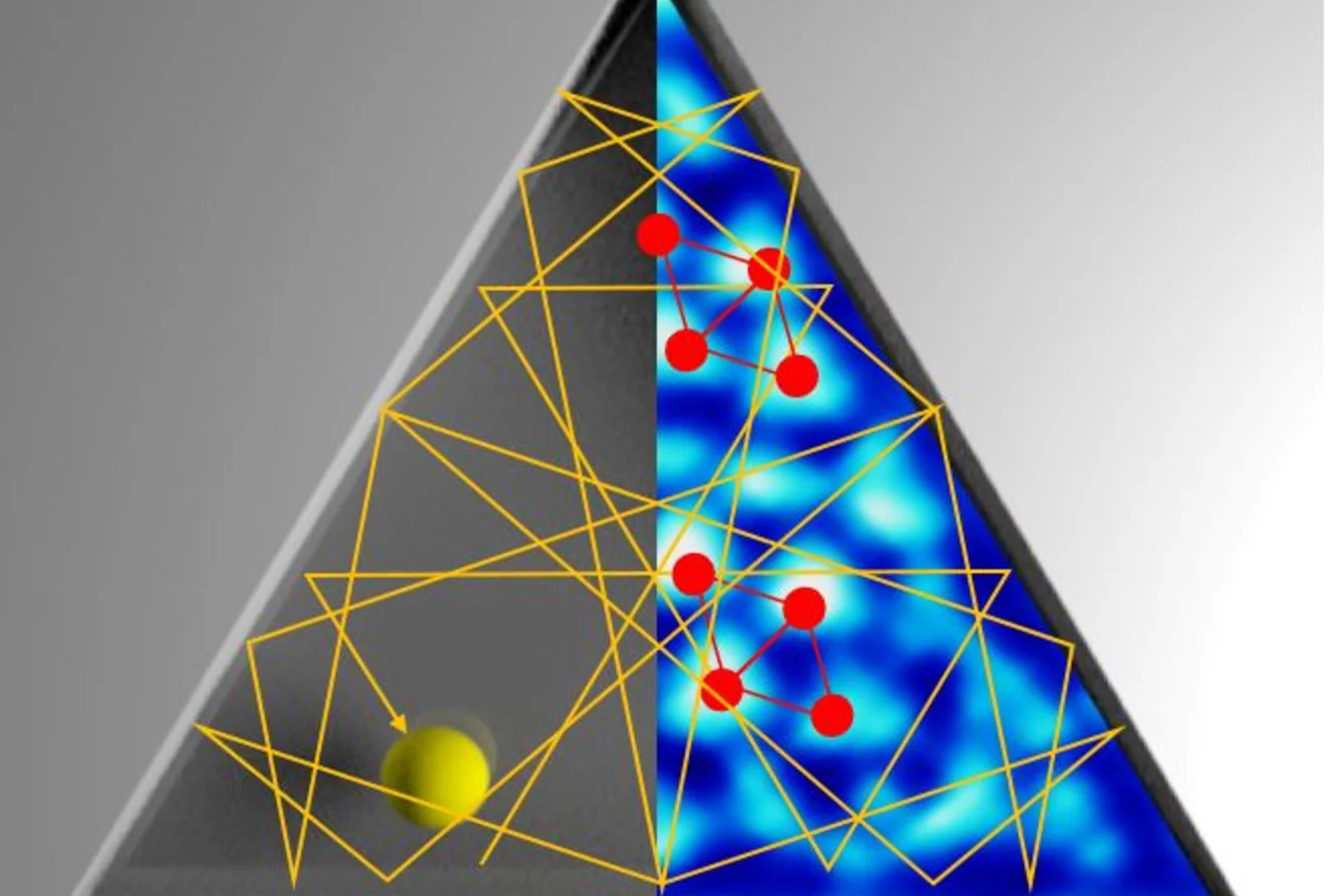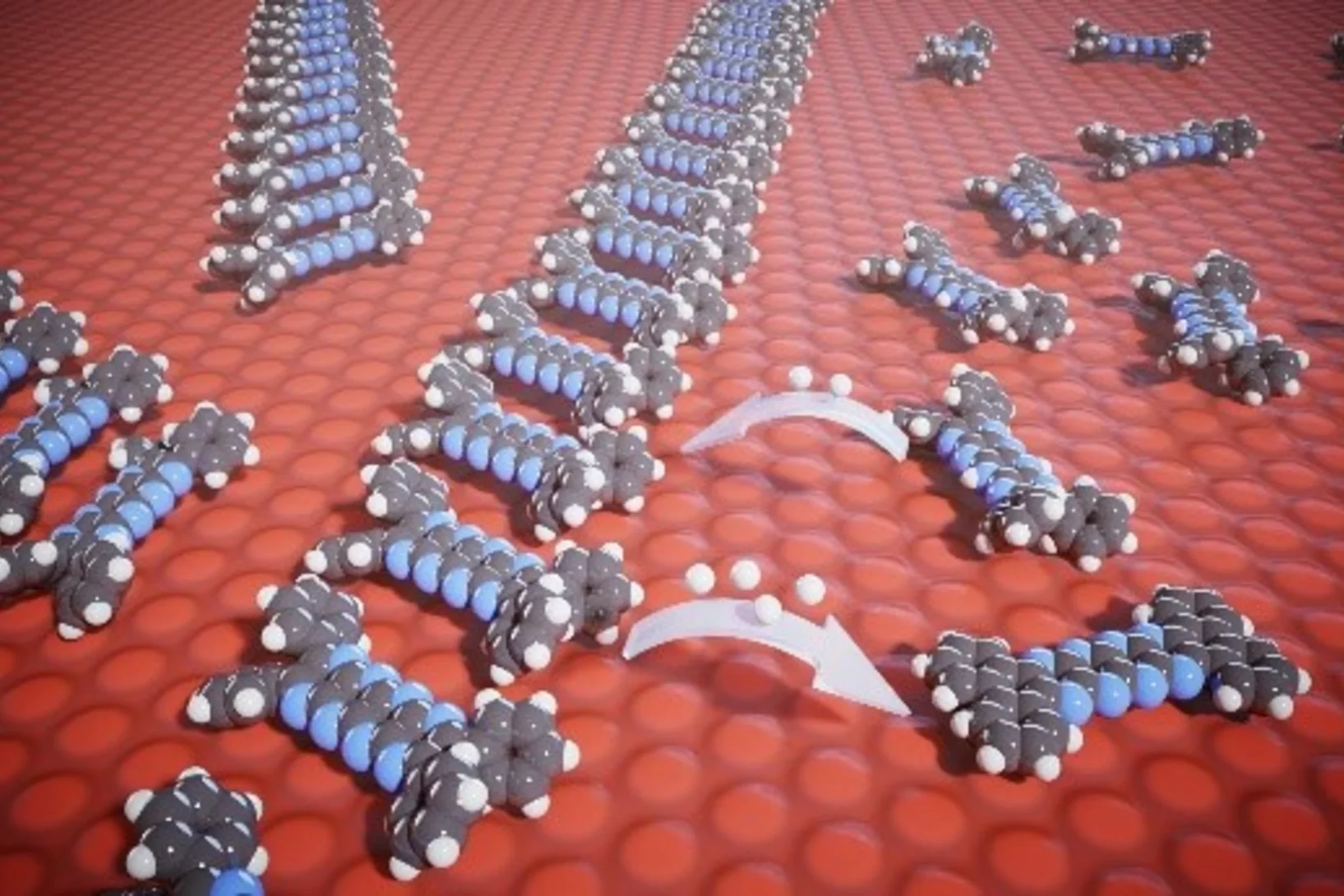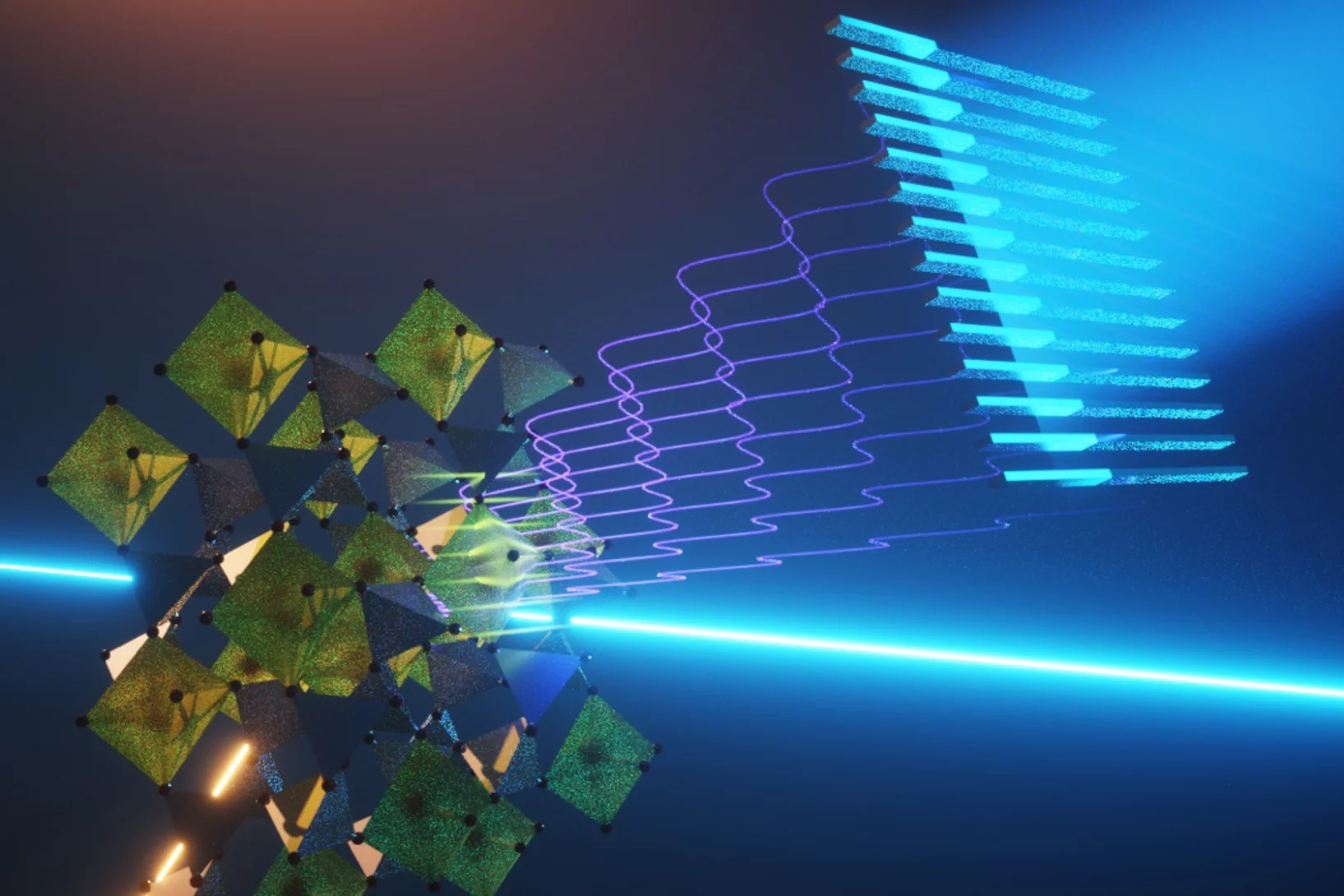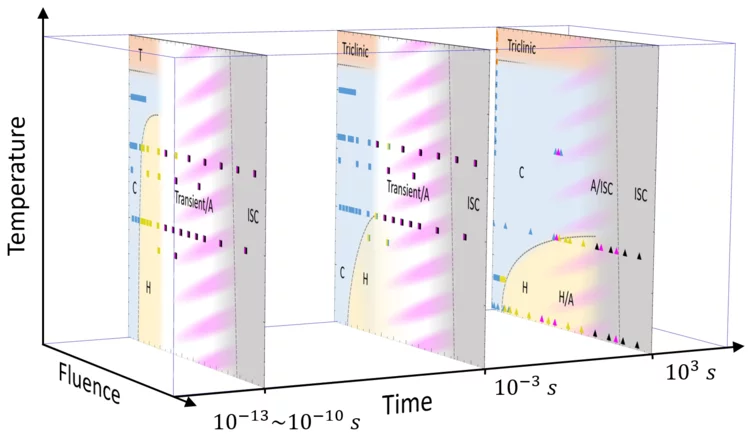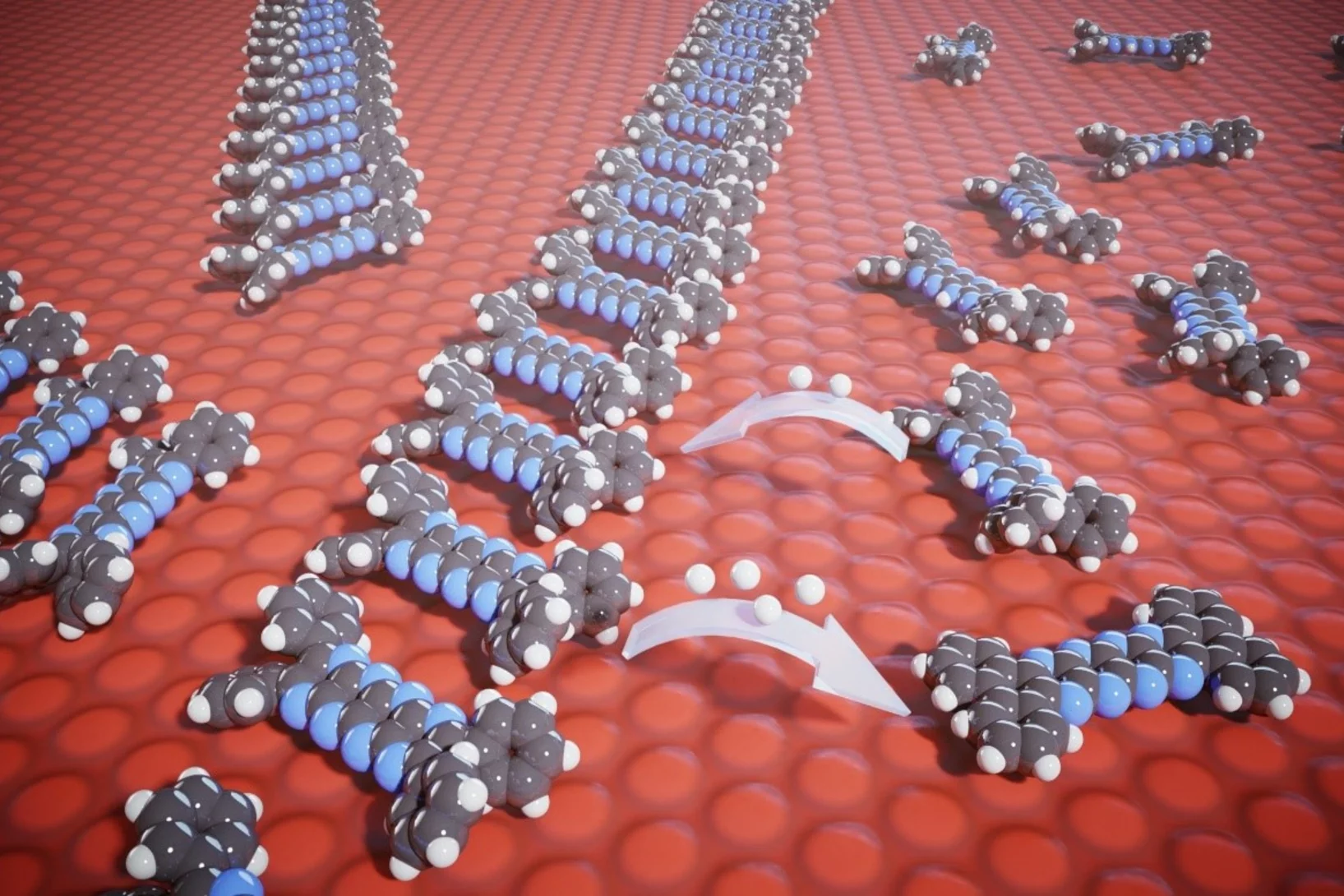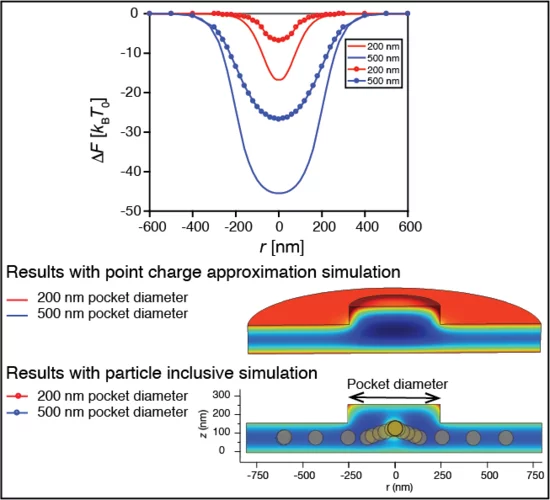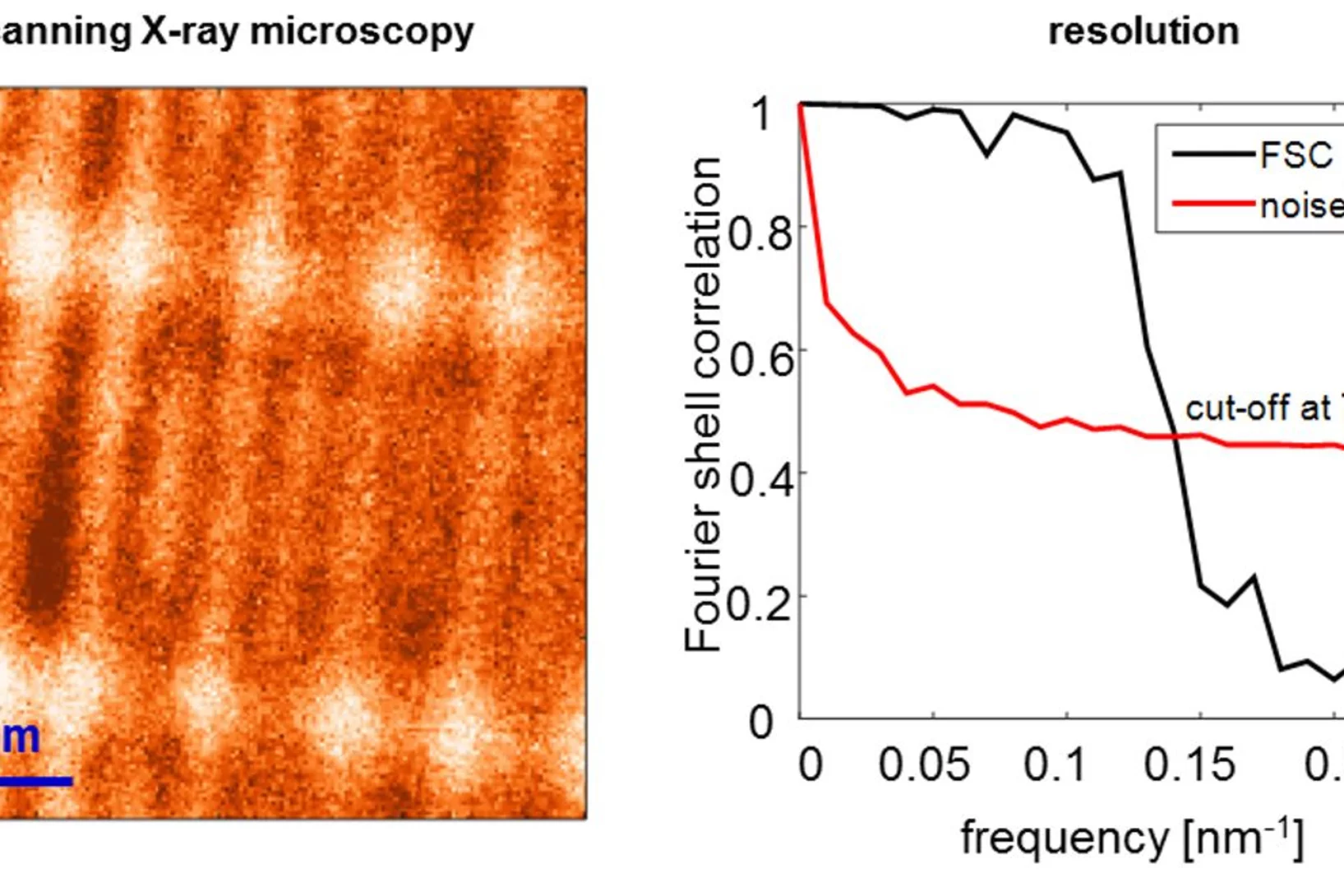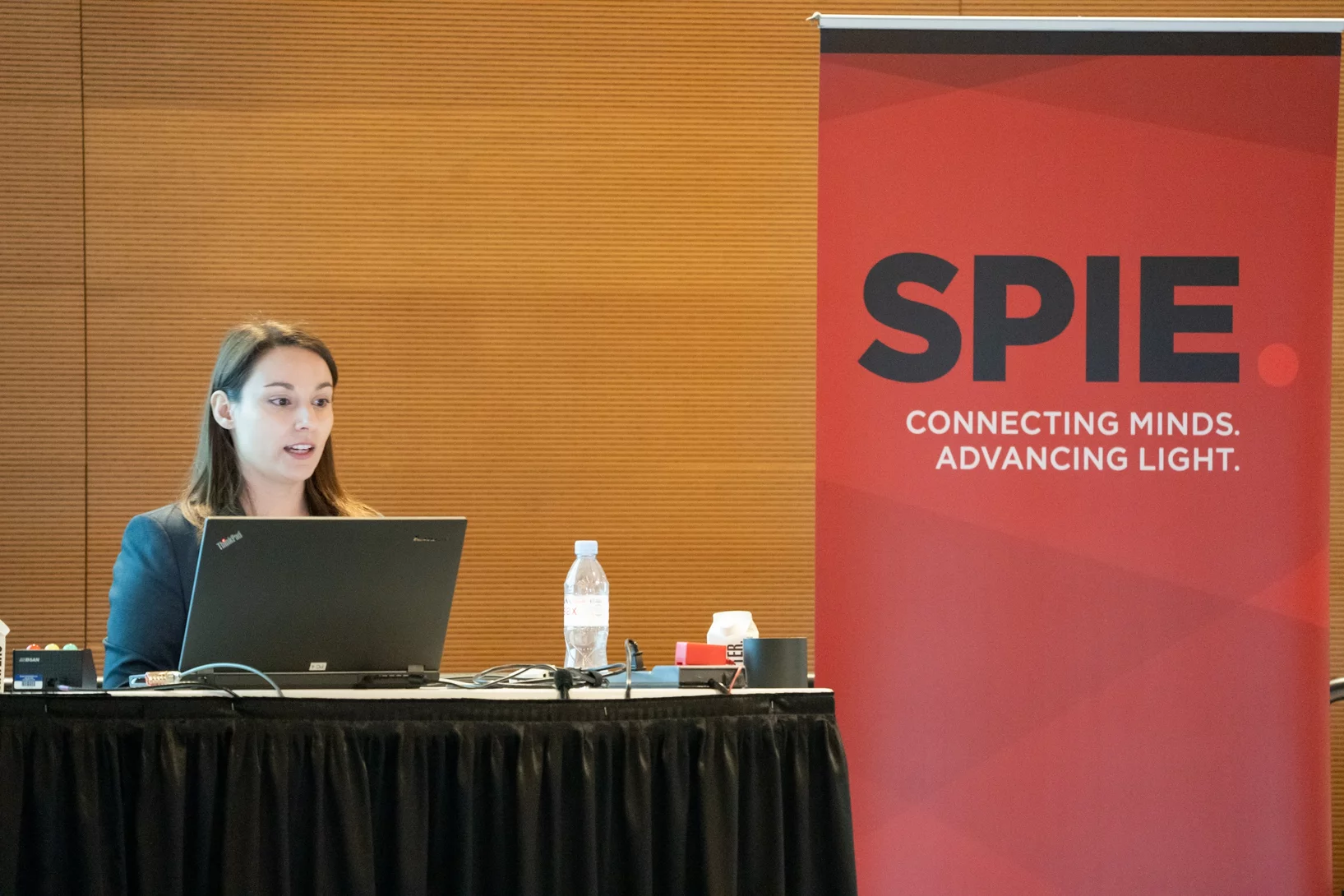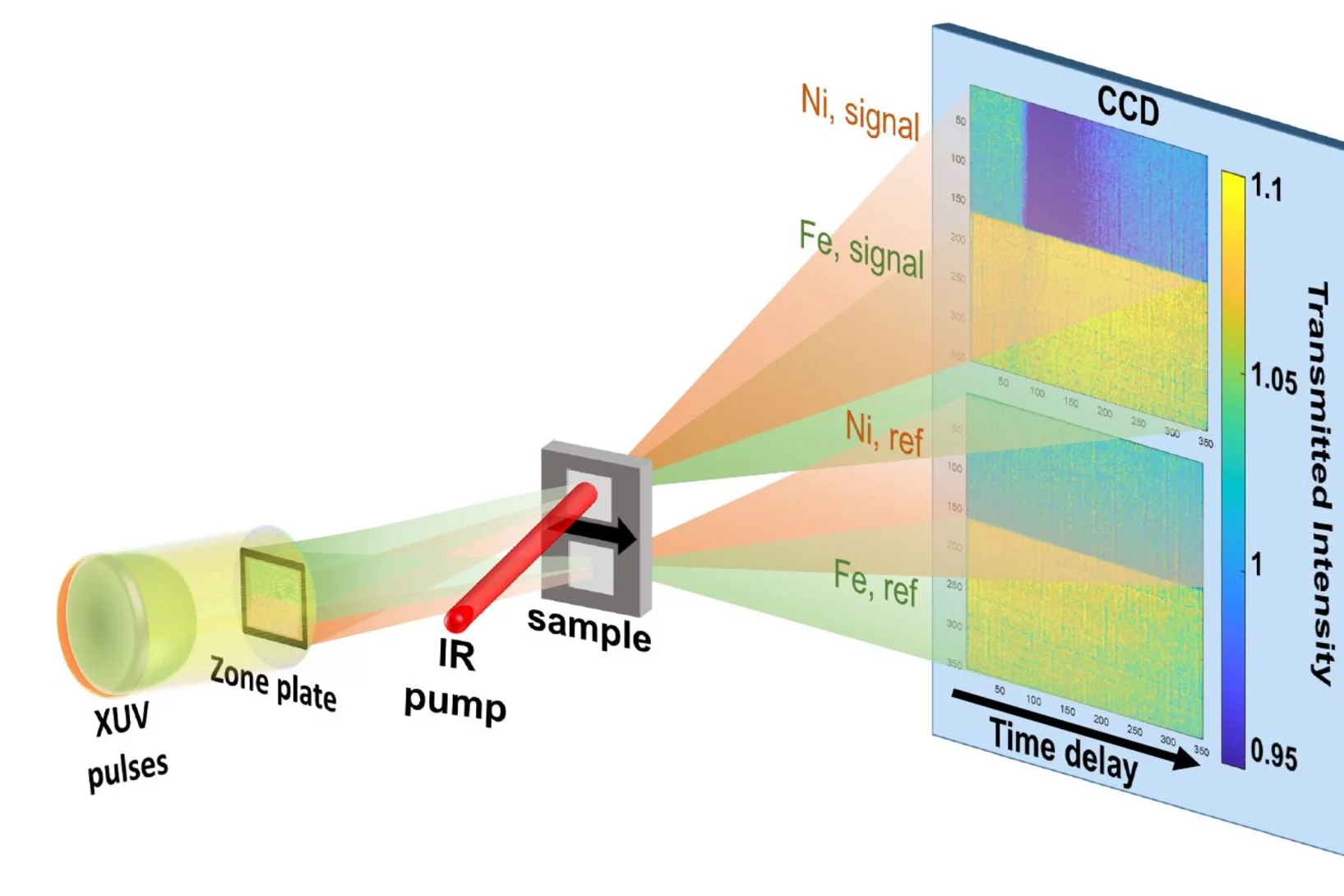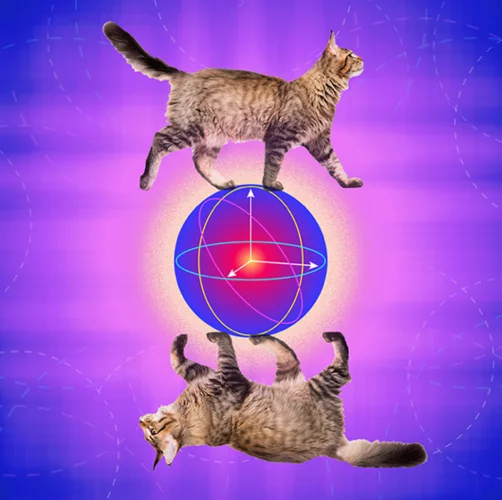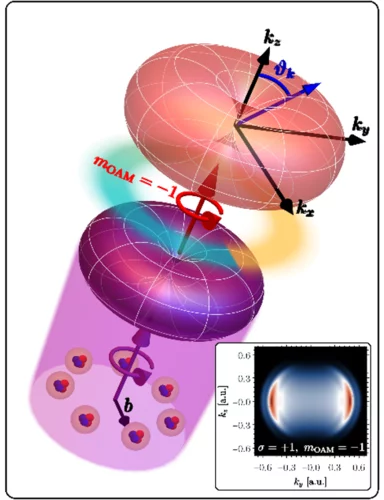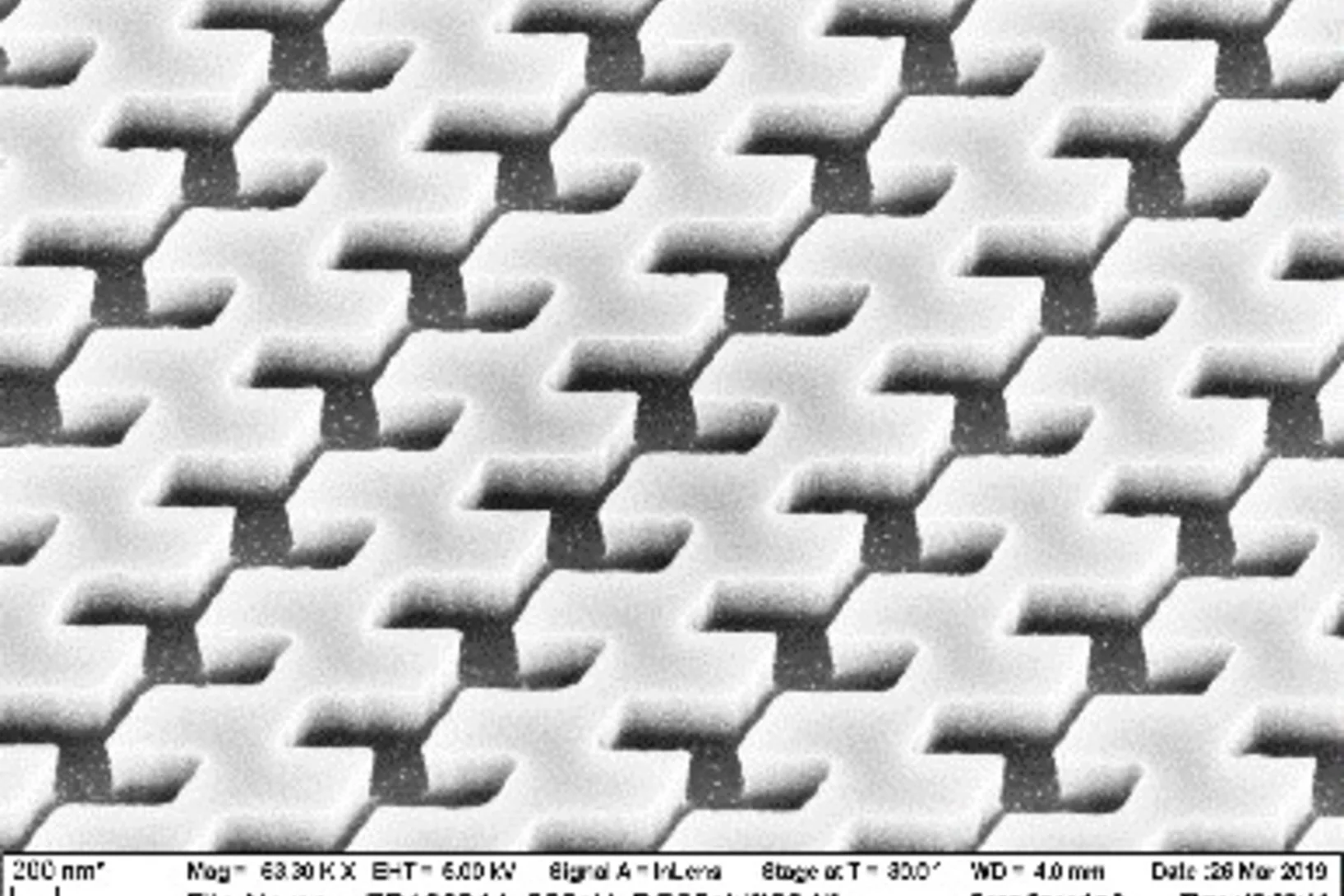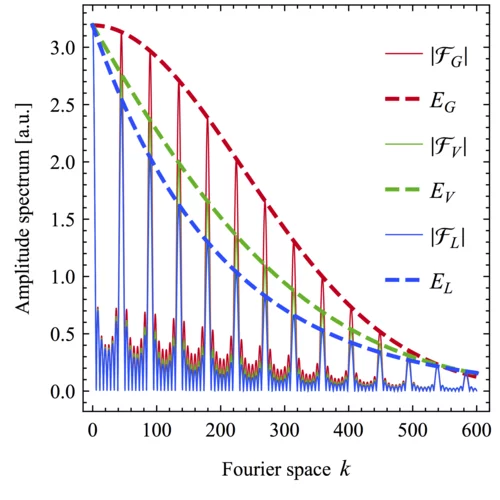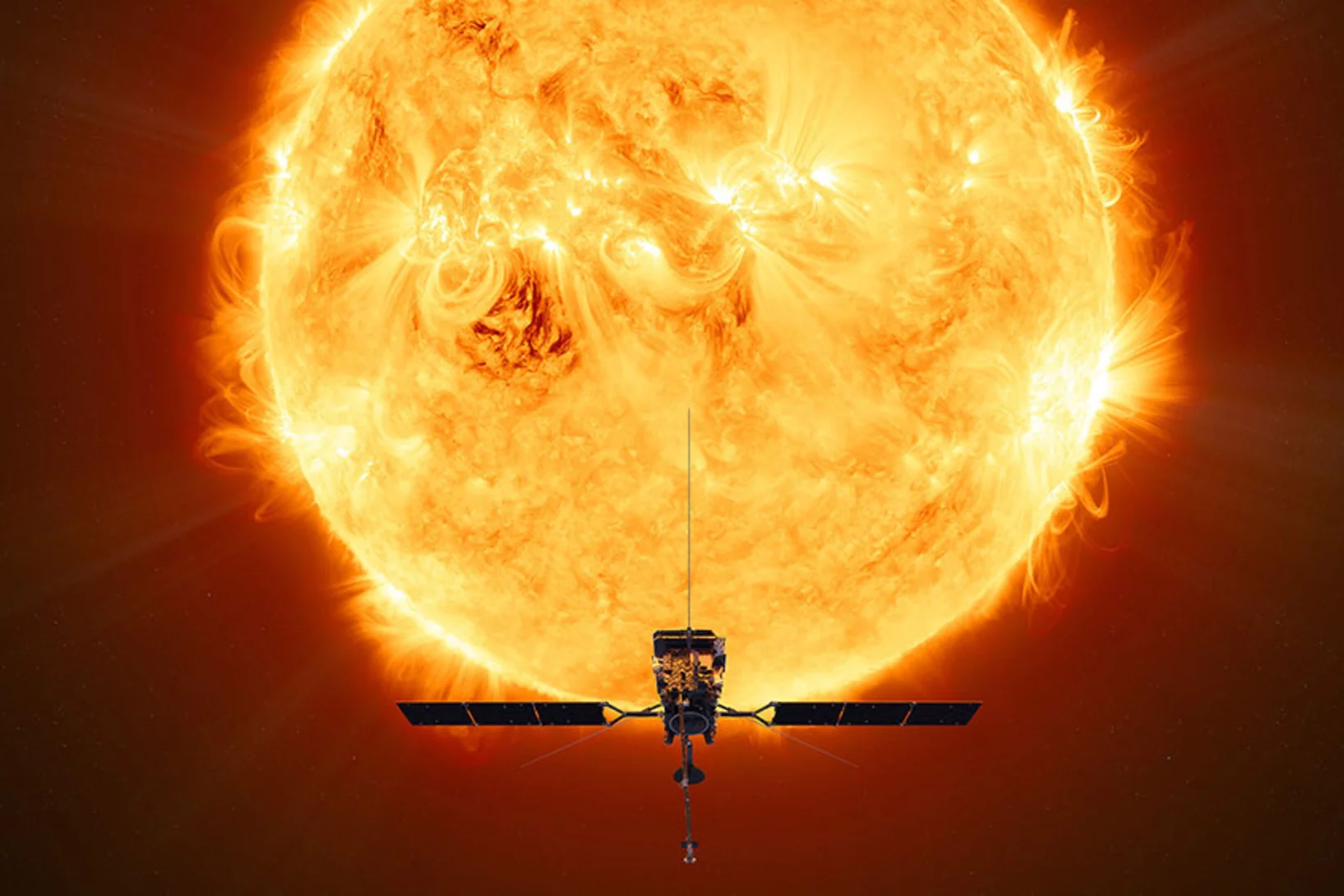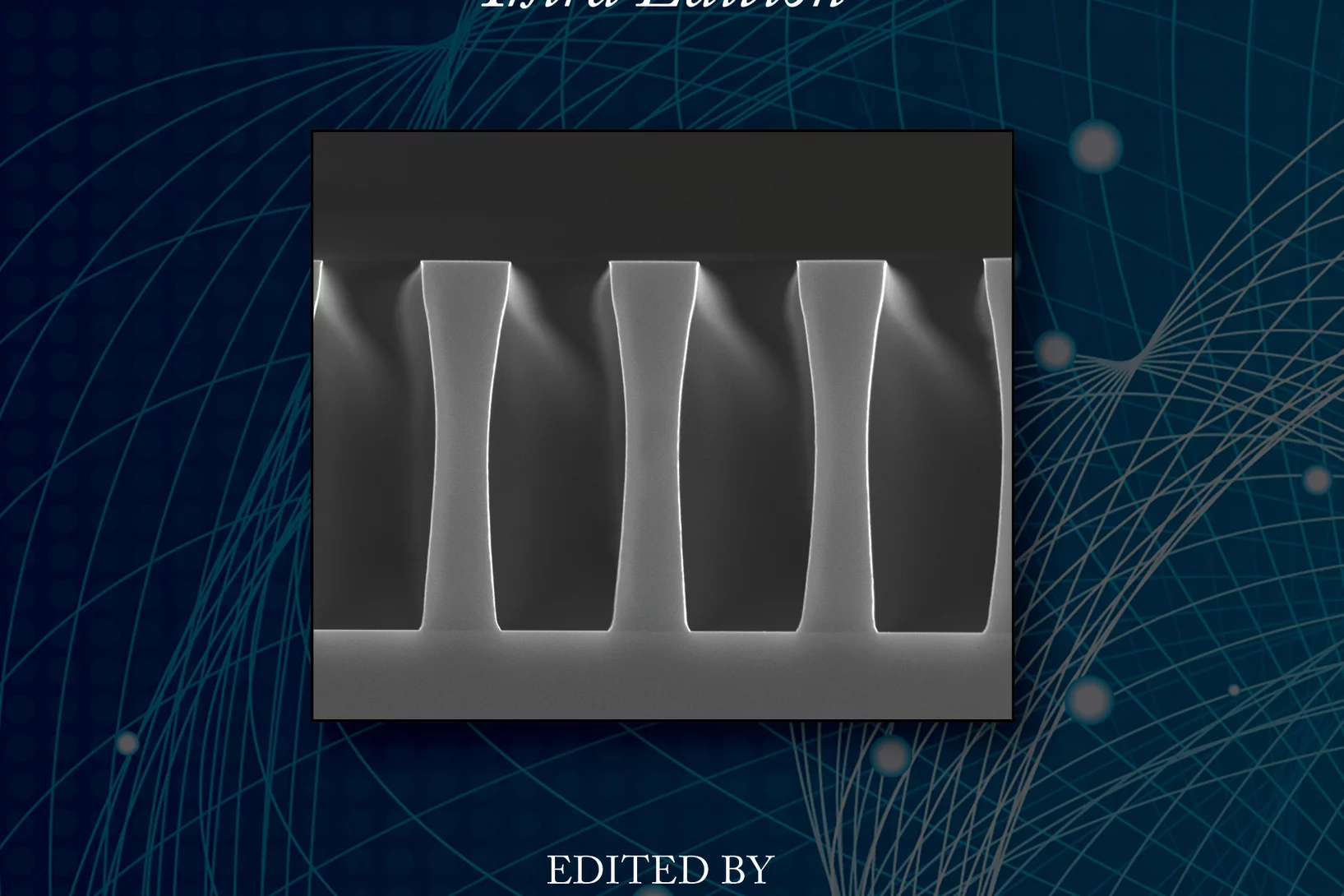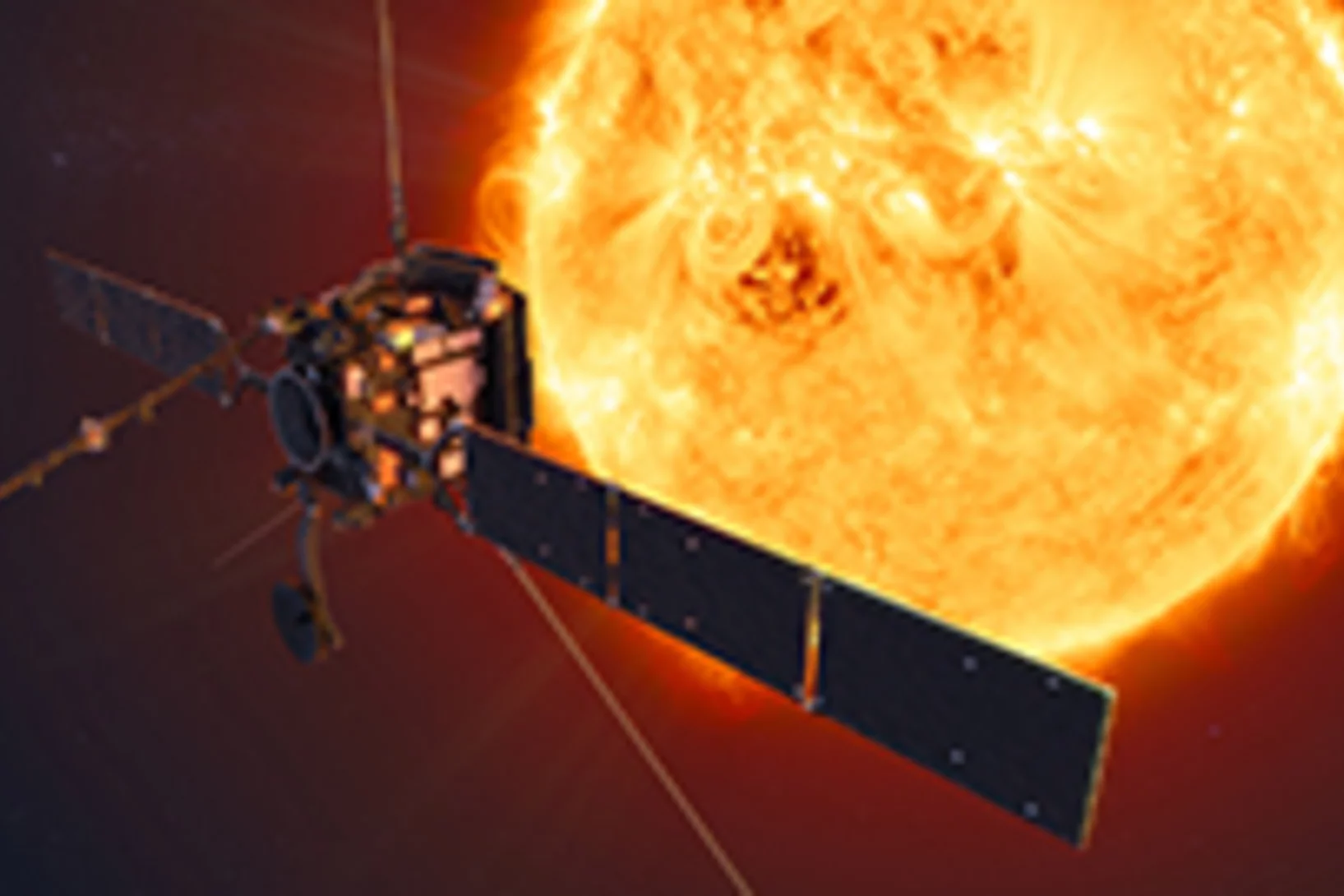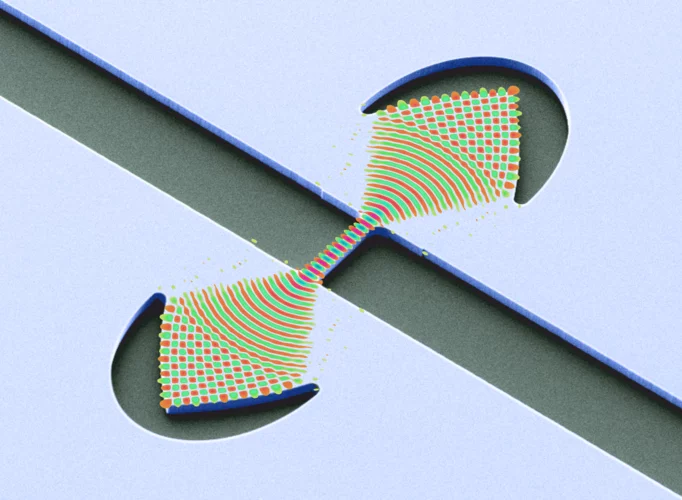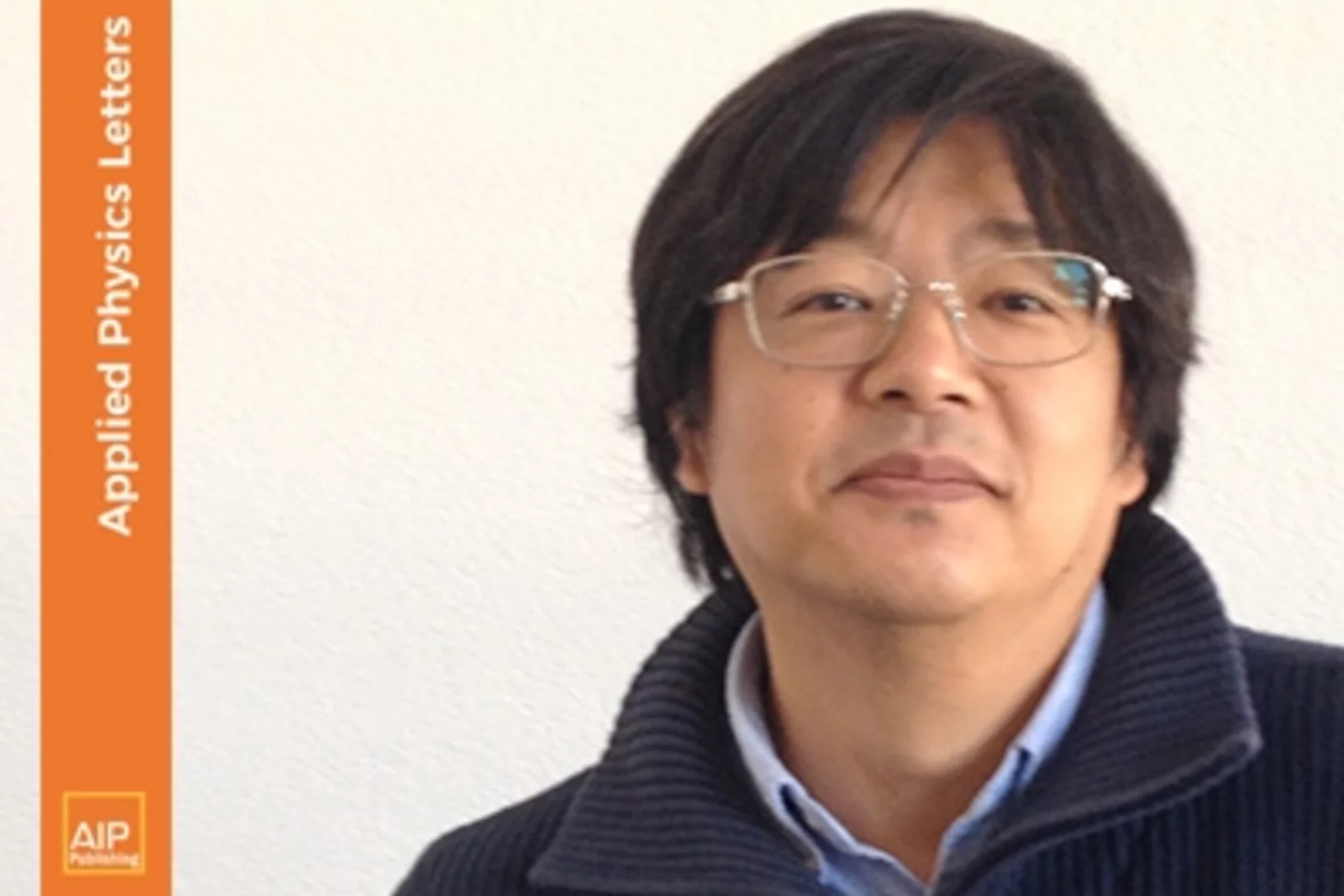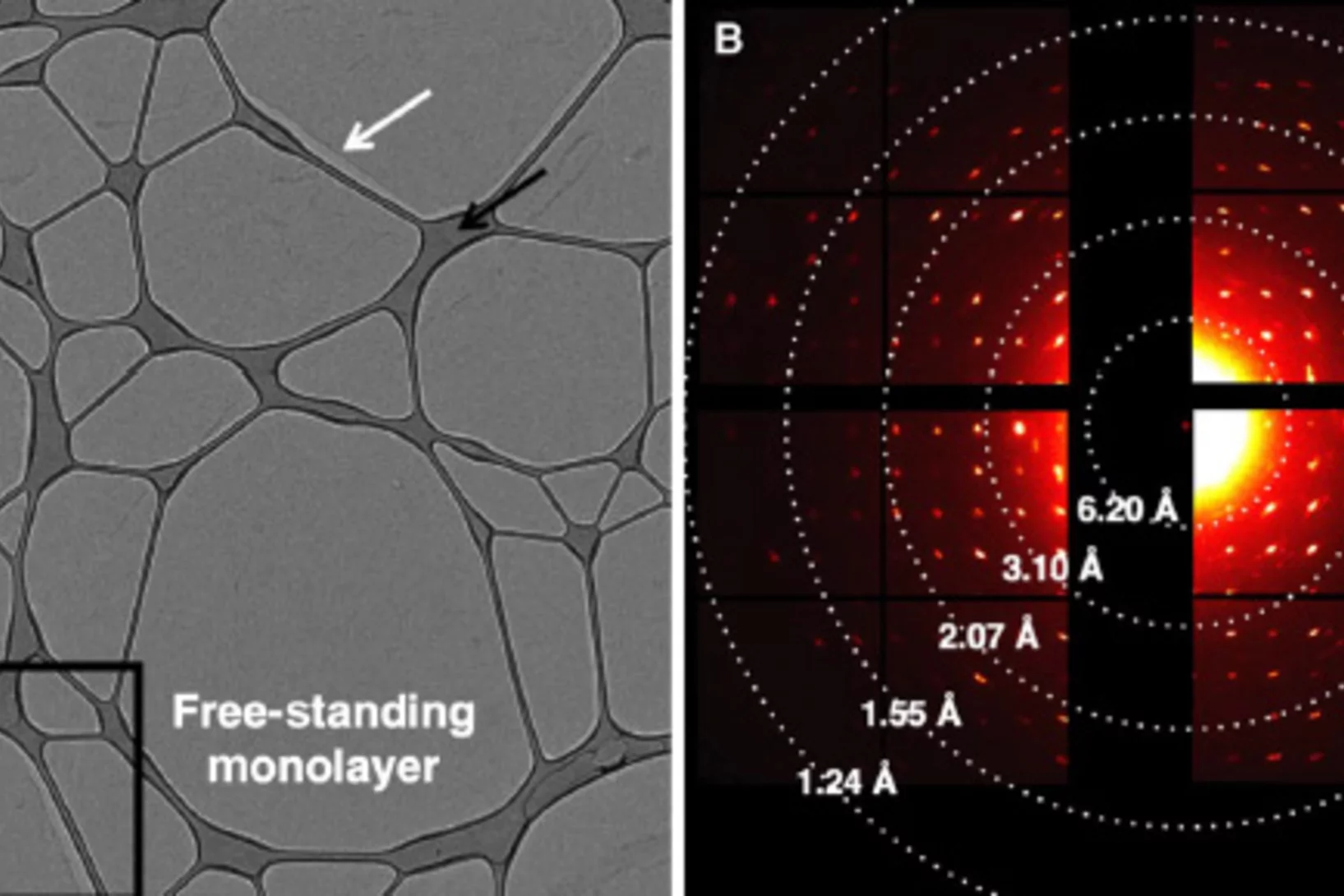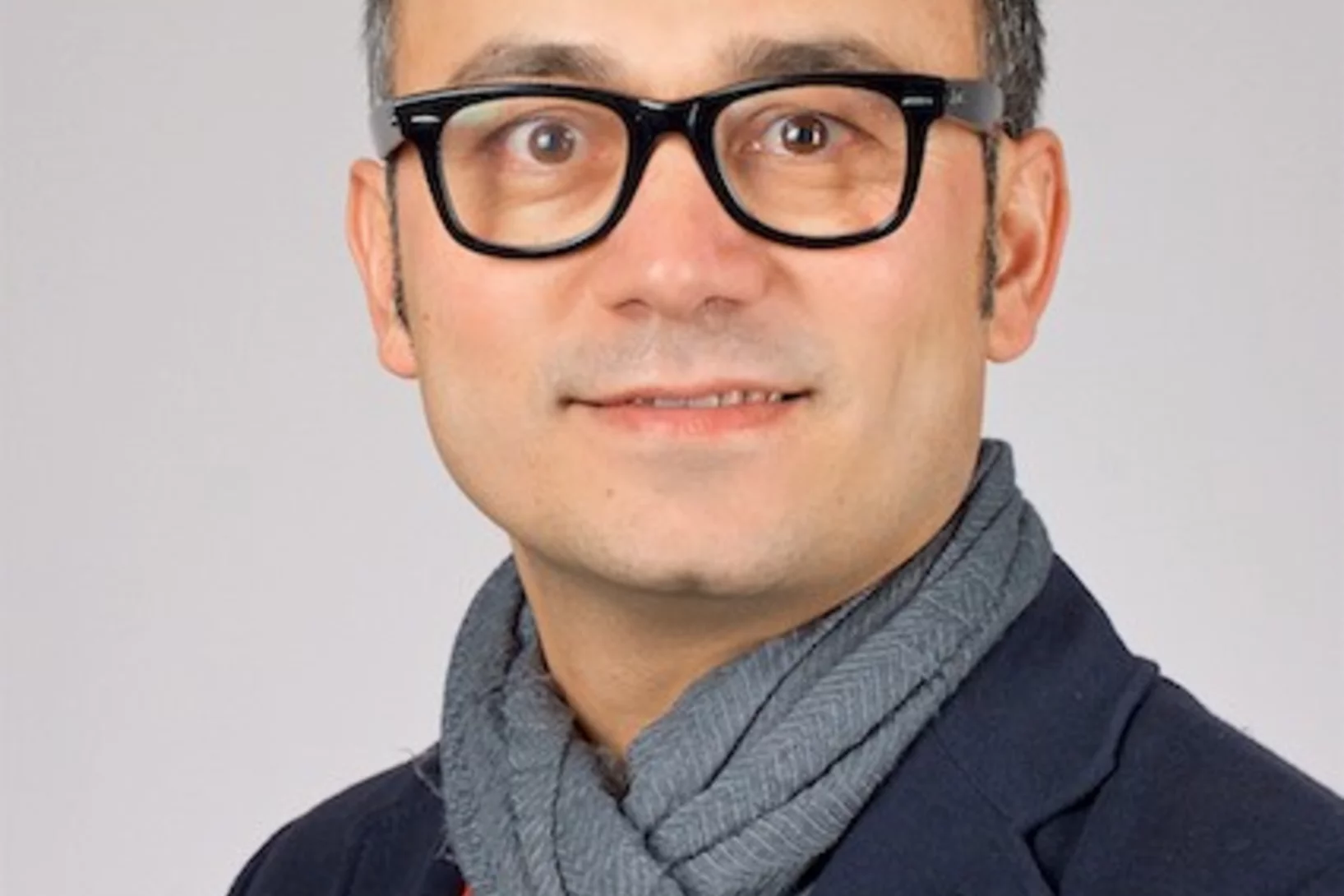Quantum billiards with correlated electrons
Our collaborators at the Jozef Stefan Institute – the leading author, Jan Ravnik, is now a PSI Fellow at LMN – report a study of the electron ordering in equilateral triangle structures via photoexcitation of the prototypical dichalcogenide 1T-TaS2.
New class of substances for redox reactions
The step-wise oxidation of a new redox-active molecular semiconductor is recognized by changing shape, assembly behavior and other properties by spectro-microscopy correlation.
Coordination-Driven Monolayer-to-Bilayer Transition in Two-Dimensional Metal–Organic Networks
Scientists at LMN and the University of Basel have discovered a nucleation and growth mechanism of metal-organic coordination networks in Langmuir Blodgett films floating on water.
Einmalig scharfer Röntgenblick
Ein neues Verfahren des PSI erlaubt die quantenphysikalische Erforschung von Materialien mithilfe von Röntgenlasern.
A time-domain phase diagram of metastable quantum states
Our collaborators at the Jozef Stefan Institute – the leading author, Jan Ravnik, is now a PSI Fellow at LMN – report a ‘dynamical’ phase diagram of metastable quantum states generated via photoexcitation of the prototypical dichalcogenide material 1T-TaS2.
LMN PhD-student Thomas Mortelmans wins best talk award
Every year, during the winter months, PhD students of the Swiss Nanoscience Institute take part in the SNI: Nano in the snow PhD school. Currently, as COVID-19 is still omnipresent in our everyday it happened virtually this year and Thomas Mortelmans took part. He said: “It was an exciting day filled with excellent scientific content from a variety of research fields; ranging from quantum physics, to protein engineering and drug delivery. During these events, the interdisciplinary of SNI is nicely highlighted and the benefit of joined research projects across scientific disciplines can be seen.”
Thomas gave an interdisciplinary introduction to the field of microfluidics and was awarded with the prize of best talk.
New class of substances for REDOX chemistry
The compounds known as ‘pyrazinacenes’ are simple, stable compounds that consist of a series of connected nitrogen-containing carbon rings. They are suitable for applications in electrochemistry or synthesis, as the researchers describe in the science journal Communications Chemistry. They were first designed, synthesized and chemically characterized in solution by the Hill team and carefully investigated by Scanning Tunneling Microscopy and Surface Chemical Analysis. The compounds have been shown to reversibly release and accept electrons and arrange themselves differently depending on the oxidation state. Interestingly, the oxidation and reduction reactions of the pyrazinacenes are not only affected by a chemical impulse, but can also be stimulated by light so they can be considered photo-redox active.
EPS Council
Thomas A. Jung has been elected as a delegate of the Associate Members of the European Physical Society. As a member he shall contribute to the reviewing of the activities of the Society, the annual accounts and to the discussion of future priorities and new activities.
Optimization of Nanofluidic Devices for Geometry-Induced Electrostatic Trapping
Single particle studies play an important role in understanding their physical and chemical properties. Electrostatic trapping is on one such robust method that allows for a contact-free high-throughput single nanoparticle trapping in an aqueous environment in a nanofluidic device. However, finding an optimum design solution for stiffer single particle trapping for different particles is a cumbersome process. This work presents all crucial geometrical parameters required to tune the trapping efficiency of the device, and their impact. Furthermore, the work enables to quickly identify and optimize nanofluidic devices design for stronger single particle confinement using numerical simulations, saving the massive experimental time required for device optimization.
Neuer Bauplan für stabilere Quantencomputer
PSI-Forscher haben gezeigt, wie sich schnellere und genauere Quantenbits erschaffen liessen. Die zentralen Elemente sind dabei magnetische Atome aus der Klasse der sogenannten Seltenen Erden, die gezielt in das Kristallgitter eines Materials eingebracht würden.
World Record: 7 nm Resolution in Scanning Soft X-ray Microscopy
During the past decade, scientists have put high effort to achieve sub-10 nm resolution in X-ray microscopy. Recent developments in high-resolution lithography-based diffractive optics, combined with the extreme stability and precision of the PolLux and HERMES scanning X-ray microscopes, resulted now in a so far unreached resolution of seven nanometers in scanning soft X-ray microscopy. Utilizing this highly precise microscopy technique with the X-ray magnetic circular dichroism effect, dimensionality effects in an ensemble of interacting magnetic nanoparticles can be revealed.
Finalist of the Photronics Best Student Award
Ricarda Nebling, PhD student at LMN, received a prize at the SPIE Extreme Ultraviolet Conference 2020 for her contribution: “Effects of the illumination NA on EUV mask inspection with coherent diffraction imaging”.
Two-color snapshots of ultrafast charge and spin dynamics
In a joint research effort, an international team of scientists lead by Emmanuelle Jal (Sorbonne Université) performed a time-resolved experiment at the FERMI free-electron laser to disclose the dynamic behavior of two magnetic element of a compount material in only one snapshot. The X-ray Optics and Applications group developed a dedicated optical element for this experiment that is usable with two different photon energies (colors) simultaneously.
Scientists develop a new kind of qubit based on the concept of Schrödinger’s cat
Scientists in the Applied Physics department of Yale University – one of the leading authors, Alexander Grimm, has in the meantime relocated to PSI – have developed a new device that combines the Schrödinger’s cat concept of superposition (a physical system existing in two states at once) with the ability to fix some of the trickiest errors in a quantum computation.
Photoelectric Effect with a Twist
In a joint research effort, an international team of scientists lead by Prof. Giovanni de Ninno (University of Nova Gorica, Elettra Sincrotrone Trieste) now demonstrated that an OAM-dependent dichroic effect can be observed on photoelectrons. The photoelectrons are released from a sample of He atoms that is excited by the strong extreme ultraviolet light pulses from the FERMI free electron laser, whereas the orbtial momentum is imprinted with an intense infrared laser pulse. The X-ray Optics and Applications group of PSI supported the team with their experience in the creation of OAM beams and during the experiments.
Novel optics enable better X-ray Free Electron Laser experiments
Our research on multifocus off-axis zone plates was accepted in “Optica”, the highest impact journal of the Optical Society of America. In the paper we report on different ways to combine focusing and beam-splitting functionalities in one single optical element.
Efficient analysis method for multiplet lines in Fourier space
In his first paper as lead author, LMN PhD student Adrian Beckert and co-authors demonstrate an algorithm which takes advantage of peak multiplicity to retrieve line shape information. The results were published in Optics Express and are relevant to a wide range of topics, ranging from neutron-scattering to spectroscopy of rare-earth doped solids.
Zur Sonne und noch viel weiter
Das PSI beteiligt sich an Projekten der Weltraumforschung. Damit erweitert sich nicht nur das Wissen über unsere astronomische Heimat, sondern festigt sich auch das Renommee der Schweiz als zuverlässiger Entwickler von anspruchsvollem Weltraumequipment.
Microlithography: Science and Technology
The Third Edition of "Microlithography: Science and Technology" from Taylor & Francis covers the science and engineering involved in the latest generations of microlithography.
2D Materials
Hexagonal boron nitride (h-BN) “nanomesh”, a two-dimensional insulating monolayer, grown on the (111) surface of rhodium exhibits an intriguing hexagonal corrugation pattern with a lattice constant of 3.2 nm.
Schweizer Röntgen-Teleskop STIX bricht zur Sonne auf
Am 10. Februar soll die ESA-Mission «Solar Orbiter» starten. Mit dabei ist auch das Schweizer Röntgen-Teleskop STIX – mit Detektoren entwickelt am PSI.
Florian Döring received the PSI Founder Fellowship
A new PSI spin-off is on the horizon: Dr. Florian Döring, PostDoc in the Laboratory for Micro- and Nanotechnology, received a PSI Founder Fellowship at Park Innovaare.
Silicon as a semiconductor: silicon carbide would be much more efficient
In power electronics, semiconductors are based on the element silicon – but the energy efficiency of silicon carbide would be much higher.
3D magnetic structures
Three-dimensional magnetic nanostructures developed at LMN in collaboration with NUM-LMX and University of Glasgow have been featured on the cover of Materials Today.
Comenius Medal for eCourse «Ethics in Research»
Dr. Helmut Schift, head of polymer nanotechnology group of LMN and consultant for research integrity at PSI, received the Comenius medal on 27 June 2019 in Berlin. The Comenius-EduMedia-Award is granted for outstanding examples of digital educational media.
First demonstration of a Germanium laser
Scientist at the Paul Scherrer Institut and ETH Zürich, with colleagues from CEA Grenoble, have demonstrated and characterized a technology that, for the first time, yields lasing from strained elemental Germanium. This achievement underlines PSI’s leading role in the development of Silicon-compatible laser light sources.
Soichiro Tsujino is one of the APL top reviewers of 2018
The editors of Applied Physics Letters (APL) named Dr. Soichiro Tsujino, head of the XFEL nanoengineering group of LMN, as one of the 16 ALP top reviewers in 2018.
From semiconductors to quantum technologies symposium
While information technology over the last 50 years has been based on conventional semiconductor electronics, future technologies – aiming to enhance the performance of computers, sensors and to secure data communication for the future internet – will use the quantum origins of nature.
This symposium highlighted the opportunities for the traditional semiconductor materials to remain the platform on which also the new quantum technologies will build on. The symposium, in part a celebration of the career of PSI Quantum Technologies group leader Hans Sigg, was held at ETHZ and included notable speakers both local and international, Gabriel Aeppli (PSI, ETHZ & EPFL), Jérôme Faist & Klaus Ensslin (ETHZ), Theo Rasing (RU Nijmegen), Giordano Scappucci (QuTech-TU Delft) and Klaus von Klitzing (MPI Stuttgart).
Supramolecular architectures of molecularly thin yet robust free-standing layers
In a collaboration within the network of the Swiss Nanoscience Institute, the formation of free-standing molecular monolayers using self-assembly processes has been demonstrated. The results of the study have been published in the February 2019 issue of Science Advances.
Dr Yasin Ekinci elected as Fellow of SPIE
Dr. Yasin Ekinci, Head of the Advanced Lithography and Metrology Group and ad interim Head of the Laboratory for Micro and Nanotechnology, has been elected to the grade of Fellow of The International Society for Optics and Photonics (SPIE).


